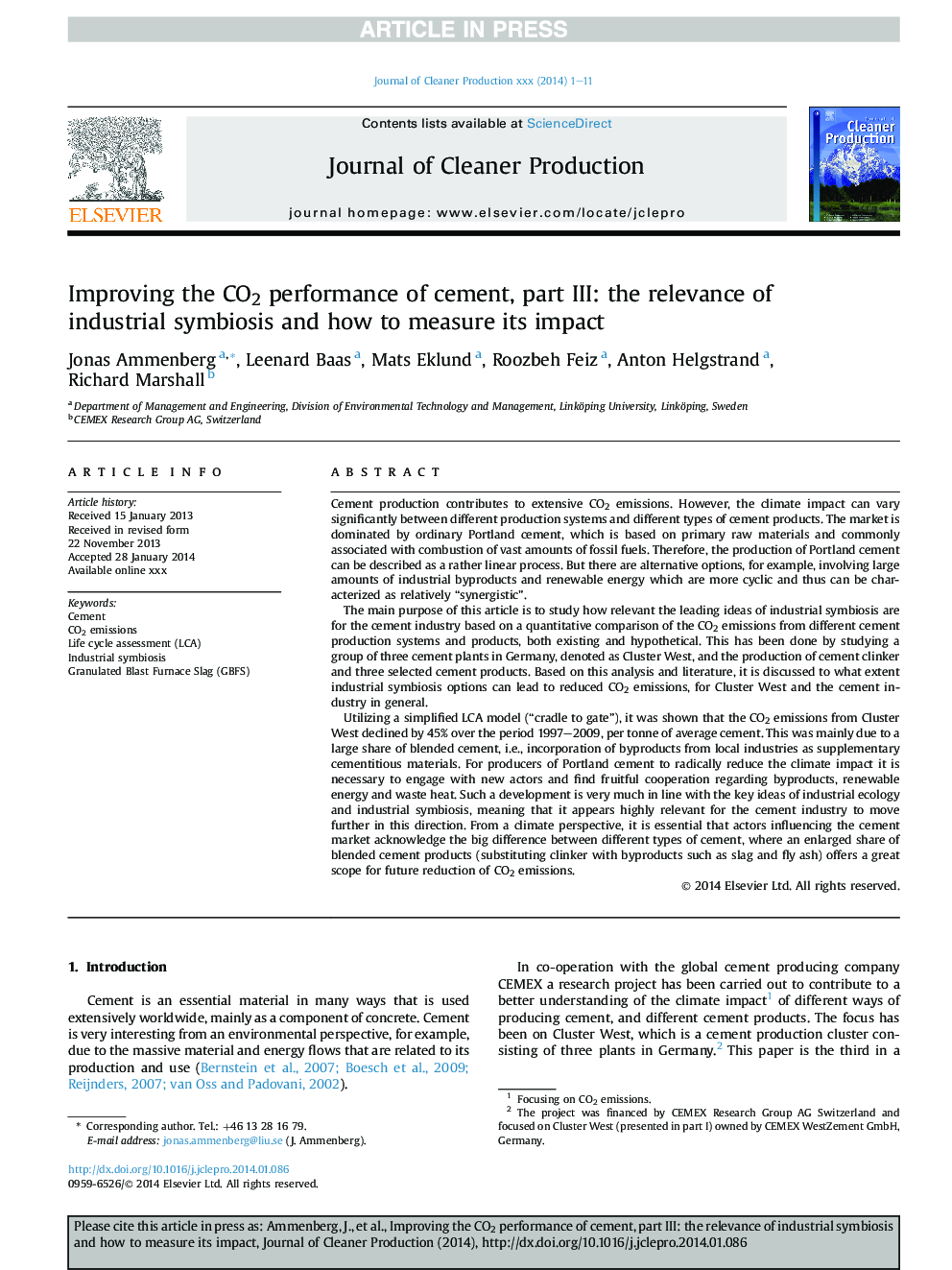| Article ID | Journal | Published Year | Pages | File Type |
|---|---|---|---|---|
| 8104243 | Journal of Cleaner Production | 2015 | 11 Pages |
Abstract
Utilizing a simplified LCA model (“cradle to gate”), it was shown that the CO2 emissions from Cluster West declined by 45% over the period 1997-2009, per tonne of average cement. This was mainly due to a large share of blended cement, i.e., incorporation of byproducts from local industries as supplementary cementitious materials. For producers of Portland cement to radically reduce the climate impact it is necessary to engage with new actors and find fruitful cooperation regarding byproducts, renewable energy and waste heat. Such a development is very much in line with the key ideas of industrial ecology and industrial symbiosis, meaning that it appears highly relevant for the cement industry to move further in this direction. From a climate perspective, it is essential that actors influencing the cement market acknowledge the big difference between different types of cement, where an enlarged share of blended cement products (substituting clinker with byproducts such as slag and fly ash) offers a great scope for future reduction of CO2 emissions.
Related Topics
Physical Sciences and Engineering
Energy
Renewable Energy, Sustainability and the Environment
Authors
Jonas Ammenberg, Leenard Baas, Mats Eklund, Roozbeh Feiz, Anton Helgstrand, Richard Marshall,
